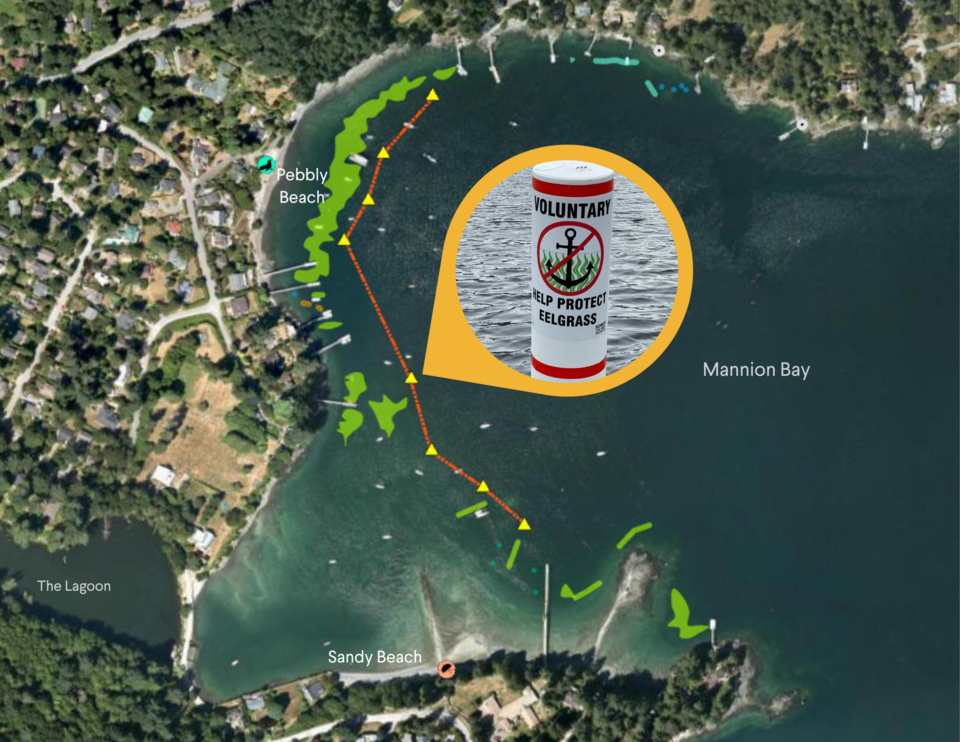Residents and visitors of Mannion Bay have likely noticed the number of buoys in the water continue to grow. The markers have been installed with the hope of protecting one of the ecosystem’s most delicate inhabitants, the eelgrass.
The buoys, which now cordon off most of the shallow part of the bay, are spaced to create a ‘Voluntary No-Anchor Zone’ (VNAZ). Boat anchoring is one of the major causes of damage to eelgrass meadows, as the anchor and chain drag along the sea floor and rip up the plant beds.
Bowen Island Municipality (BIM) and the SeaChange Marine Conservation Society (SCMCS) are partners on the VNAZ project, inspired by a similar model south of the border in Washington. They outline the reasons it’s important to protect this vegetation species.
“Eelgrass meadows provide home and shelter to hundreds of marine creatures in the Salish Sea, including Dungeness crab, juvenile wild Pacific salmon, and Pacific herring,” they explain in a release on the buoys.
“Mannion Bay’s eelgrass meadows are some of the largest on Bowen Island, and provide critical habitat to juvenile salmon that migrate out from Terminal creek and forage fish that visit the bay. These meadows support the fish and wildlife that Bowen Islanders care deeply about.”
Eelgrass also assists humans by reducing erosion through stabilizing properties, and helping absorb carbon to fight climate change. Unfortunately, this same climate change also has devastating impacts on the eelgrass itself.
The plant is estimated to have lost 30 per cent of its worldwide meadows since the 1880s. In Salish Sea territory, this number is between 22 to 45 per cent in the last 30 years, according to a 2019 study (Beaty and Sanford).
Both BIM and SCMCS emphasize the project is voluntary in nature, so it’s up to boaters and residents to take the initiative to observe the VNAZ and protect the eelgrass.
In addition to anchoring outside the buoys, they also encourage discovering where eelgrass grows around Bowen and the Salish Sea, and sharing why the plant species is important to conserve and maintain


